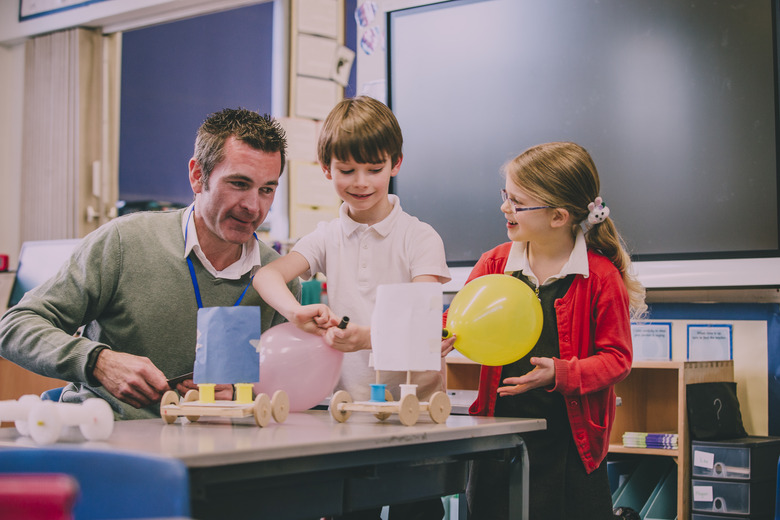Whatever type of science project you do, it follows a process known as the scientific method. The scientific method looks for cause and effect relationships in nature, such as how changes to something make something else behave. This helps people learn and answer questions about the world they live in.
TL;DR (Too Long; Didn’t Read)
The scientific method, used in science projects, contains several steps. As part of your conclusion, you may include a real world application, which explains how the results of your experiment can apply to society.
Science Project Steps
The number of steps in a science project vary from one to another, depending on ability level and time restrictions, but in most cases you follow standard steps in a particular order. First, you ask a question (usually beginning with how, what, when, who, which, why or where) about something you can measure. Next comes the research part, where you find out the best way to do things to avoid repeating past mistakes. When you have your research, you can propose a hypothesis, an educated guess about what you expect to happen, e.g. “If you do X, then X will happen,” then perform an experiment to test the hypothesis.
It’s important to carry out a fair experiment, changing only one factor, the independent variable, at a time while keeping all other conditions, the dependent variables, the same. You should also repeat your experiments many times to ensure the initial results weren’t an accident. Record your observations, analyze what the data means and reach a conclusion such as do you accept or reject your hypothesis?
Science Project Applications
As part of your conclusion, you may include an application. This is a real world implication of what your experiment discovered. In other words, how does your science project relate to real life and the wider scientific field? How can the results of your experiment apply to society? For example, in an experiment about how much gas yeast produces in various environments, your application section may talk about how those scientific principles can optimize the rising of bread dough and make better baked goods. An experiment about the rate of water absorption by calcium chloride in different environments can help make a natural, cheaper dehumidifier alternative to an electric dehumidifier. An experiment about the dangers of using a cell phone while driving (tested using a computer-based driving video game) can educate the public, change legislation and save lives.

